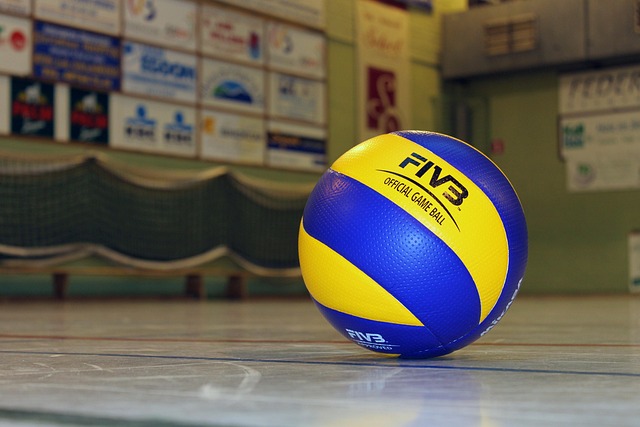The National Collegiate Athletic Association (NCAA) soccer leagues comprise three divisions – I, II, and III – each with distinct rules, regulations, and championship structures based on athletic and academic performance. Division I features larger schools with robust athletics and media exposure, while Divisions II and III offer competitive opportunities focused on academic excellence and athletic development. Analyzing NCAA soccer rankings requires understanding these divisions, considering both quantitative (win-loss records, goal differentials) and qualitative (team cohesion, player health) factors. Coaches use comprehensive data analysis to make informed decisions, adjust strategies, and strive for success in these highly competitive leagues. Player rankings are key indicators that drive team strategies, with high-ranking players leading on and off the field, contributing to collective identity and success. Unlocking success involves multifaceted strategies like skilled recruitment, diverse talent pools, and innovative training methods, crucial for achieving top-tier rankings in NCAA soccer leagues.
Dive into the dynamic world of NCAA soccer leagues, where rankings and analysis play a pivotal role in shaping team success. Understanding these leagues is essential for both fans and strategists alike. This article explores key aspects such as ranking factors, performance metrics, player impact, and strategies for optimal league placement. By delving into these topics, we aim to provide a comprehensive overview that illuminates the intricate tapestry of NCAA soccer competition.
- Understanding NCAA Soccer Leagues: An Overview
- Ranking Factors: What Goes into Evaluating College Soccer Teams
- Analyzing Team Performance: Metrics and Key Statistics
- The Impact of Player Rankings on Team Dynamics
- Unlocking the Secrets: Strategies for Optimal League Placement
Understanding NCAA Soccer Leagues: An Overview

The National Collegiate Athletic Association (NCAA) soccer leagues are a division of organized college sports in the United States, specifically for men’s and women’s soccer teams. These leagues are divided into three main divisions based on athletic and academic performance, offering a structured competition environment for university athletes. Division I is the highest level, featuring larger schools with robust athletics programs and significant media exposure. Division II and III, while smaller in scale, provide competitive opportunities for students-athletes focusing more on academic excellence and athletic development.
Understanding these divisions is crucial when analyzing NCAA soccer rankings. Each division has its own set of rules, regulations, and championships, influencing the performance metrics used to rank teams. For instance, Division I teams often compete in large conferences with national media coverage, while smaller schools in Divisions II and III might have regional focus but equally strong athletic traditions. This diversity enriches college soccer, offering a wide range of competitive experiences for players and fans alike.
Ranking Factors: What Goes into Evaluating College Soccer Teams

When ranking college soccer teams, especially within the competitive landscape of the NCAA soccer leagues, several key factors come into play. These rankings are crucial for gauging team strength, identifying contenders, and shaping strategic decisions for both coaches and fans. The evaluation process involves a complex interplay of statistical data and qualitative assessments.
Key metrics include win-loss records, goals scored and conceded, and overall performance in conference games. However, it’s not just about numbers; factors like team chemistry, player injuries, and tactical innovations also play significant roles. Additionally, the strength of an opposing team’s schedule can influence a given squad’s ranking—a true test of their ability to perform consistently against diverse competition.
Analyzing Team Performance: Metrics and Key Statistics

Analyzing team performance in NCAA soccer leagues involves a deep dive into various metrics and key statistics. Beyond simple win-loss records, coaches and analysts scrutinize a multitude of data points to gain insights into a team’s strengths and weaknesses. Metrics like goals scored and conceded per game, possession percentage, and passing accuracy paint a comprehensive picture of a squad’s tactical execution and overall effectiveness on the field.
Key statistics, such as shots on target, corner kicks won, and fouls committed, offer further nuances. These figures help identify patterns in gameplay—whether a team excels at creating high-quality scoring opportunities or thrives on set pieces. By combining qualitative assessments with quantitative data, coaches can make informed decisions, adjust strategies, and ultimately aim for success in highly competitive NCAA soccer leagues.
The Impact of Player Rankings on Team Dynamics

In the competitive landscape of NCAA soccer leagues, player rankings play a pivotal role in shaping team dynamics. These rankings, often based on individual performance, skill sets, and potential, serve as a barometer for coaches and fans alike to gauge a player’s impact on their team. High-ranking players can significantly influence team strategies, fostering a culture of high expectations and driving overall team performance.
The dynamic between ranked players and their teammates is crucial. Top-ranked individuals often become leaders both on and off the field, motivating their peers and setting standards for camaraderie and dedication. This mentorship extends to tactical aspects, as highly ranked players can guide less experienced teammates, enhancing team cohesion and tactical flexibility. Consequently, player rankings not only reflect individual prowess but also contribute to the collective success and identity of NCAA soccer teams in a competitive environment.
Unlocking the Secrets: Strategies for Optimal League Placement

Unlocking the secrets to optimal placement in NCAA soccer leagues is a strategic art that requires a deep understanding of various factors. Teams must analyze their strengths and weaknesses, as well as those of their competitors, to navigate the complex landscape of college soccer rankings effectively. By studying past performance data, identifying key metrics, and adapting strategies accordingly, programs can position themselves for greater success in league play.
One crucial aspect involves mastering the art of recruitment and development. Building a robust player pool with diverse talents and skills enhances competitiveness. Additionally, implementing innovative training methods and tactics can give teams an edge over their peers. Ultimately, a holistic approach that integrates performance analysis, strategic planning, and continuous improvement is essential for achieving top rankings in NCAA soccer leagues.






